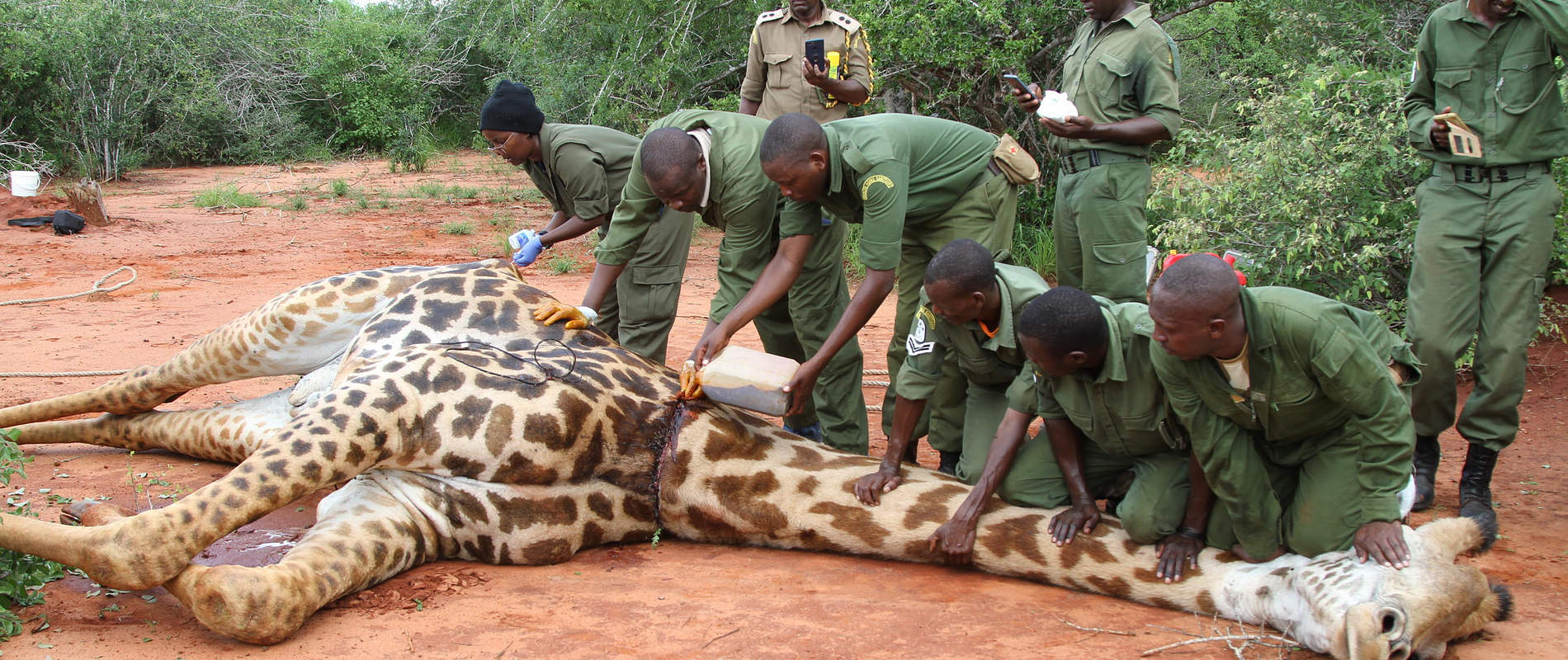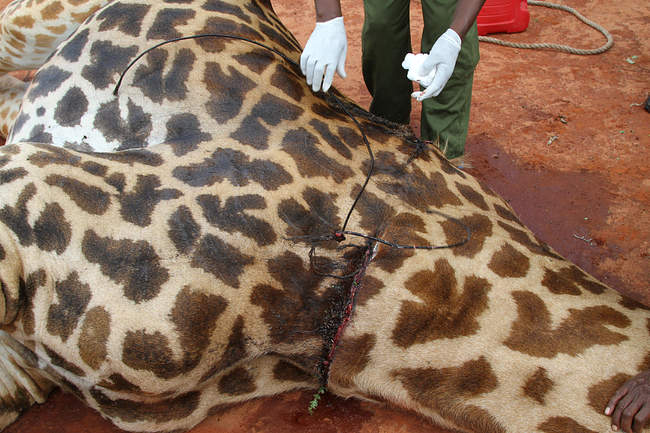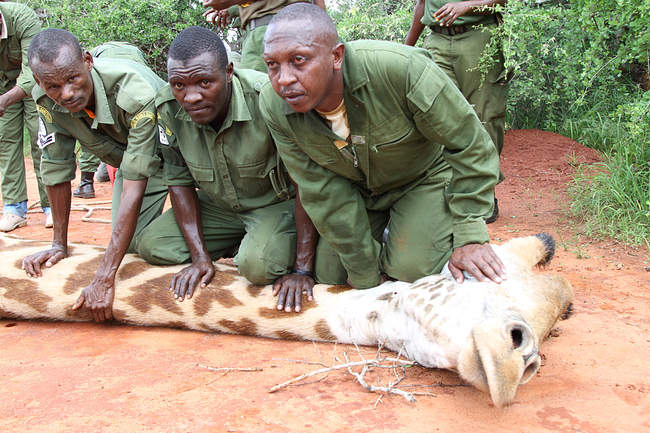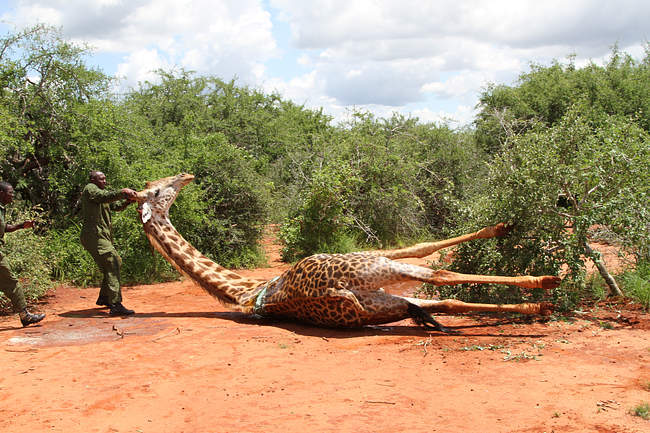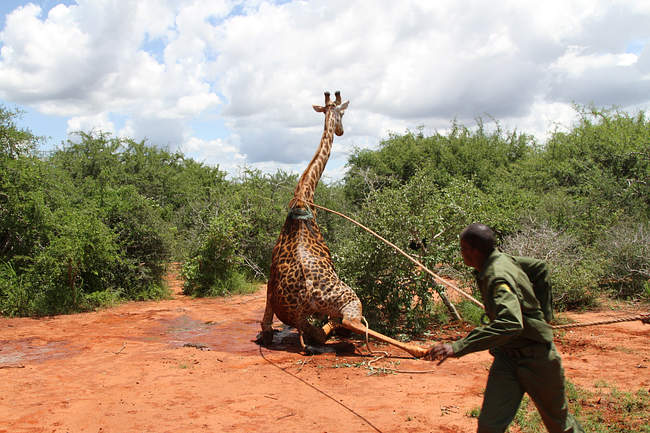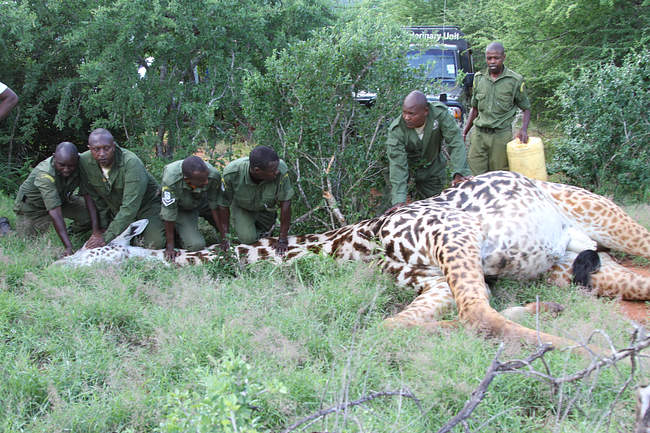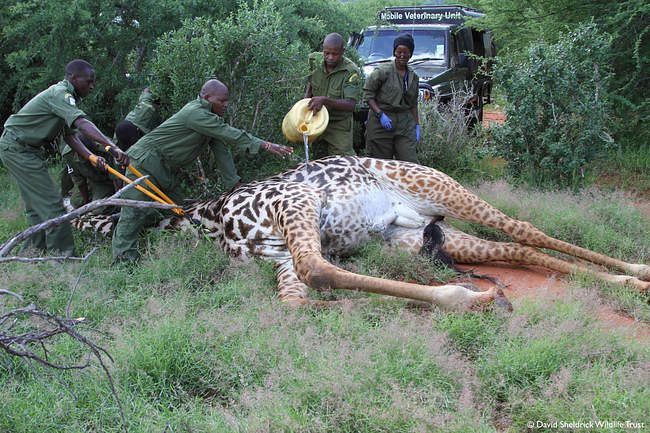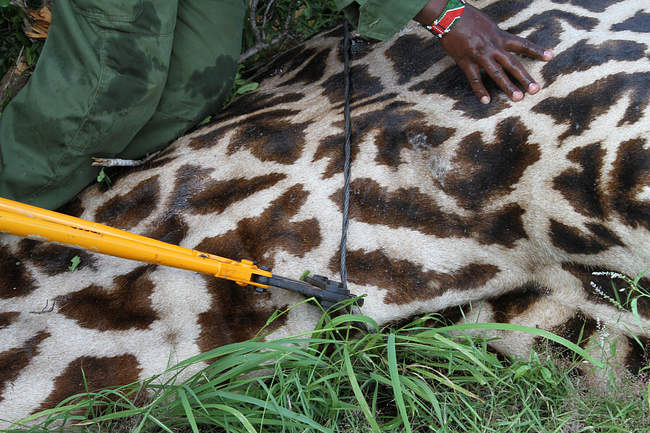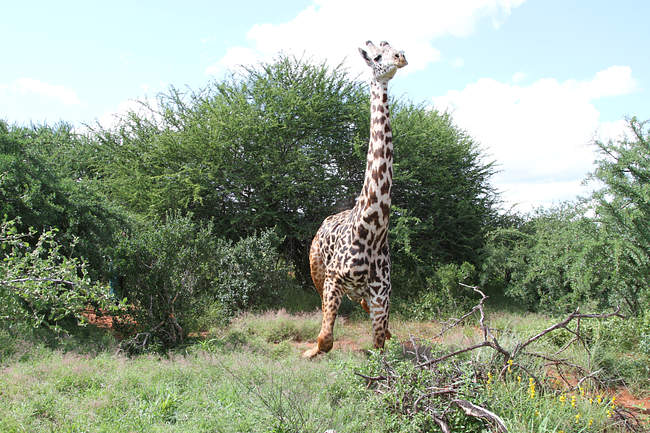Treating a giraffe is a gravity-defying, dangerous task. It requires a whole team working nimbly and quickly, tackling several hurdles before the treatment even begins.
The team must first rope the patient’s legs to ensure that when it is darted with an anesthetic, its limbs don’t splay. Then, they guide it gently to the ground, ever-conscious of its delicately long neck. Giraffe can’t be under anaesthetic for long, so treatments are done to the beat of a rapidly ticking clock. Unfortunately, these treatments are becoming more and more commonplace, as human threats take a toll on the species. On 15th November, our teams were hard at work saving the lives of not one but two snared giraffe.
The first patient was spotted by a Wildlife Works pilot near Kasigau Ranch adjacent to Tsavo West National Park. While he circled overhead to keep an eye on the patient, we sprung into action. The SWT helicopter flew KWS Vet. Dr. Poghon to the scene, so he could access the situation and dart the patient from the air. As the anaesthetic began to take effect, our pilot gently guided him towards our ground teams, who were waiting nearby. They then dashed in with their ropes and began the critical but dangerous task of restraining the huge animal, a bull giraffe in his prime. Even once he was anaesthetised and lying recumbent, three men stood by to ensure the patient and everyone else involved remained safe during the operation.

Now on the ground, Dr. Poghon immediately administered the revival and then got to work in the small window of time left. The snare was slicing into the giraffe’s spine, and given the rotting smell emanating from it, he may have had the injury for several weeks. After cutting away the thick cable, Dr. Poghon cleaned the gaping wound, packed it with healing green clay, and administered antibiotics and anti-inflammatory drugs. Within ten short minutes the whole process was over and once the giraffe was aided to his feet he ambled off without so much as a backward glance. He will make a full recovery thanks to this intervention.
The day’s work wasn’t over yet. The team then turned their attention to a second snared giraffe on Rukinga ranch adjacent to Tsavo East, who had also been reported by Wildlife Works. Thankfully, the snare around this patient was dangling loose and hadn’t yet caused any injury. However, it was certainly irritating him and had the potential to turn into a dangerous situation. After repeating the same carefully orchestrated process to dart the patient and safely guide him to the ground, Dr. Poghon was by his side to reverse the anaesthetic and cut away the snare. In the space of just five minutes, the whole treatment was complete and the bull walked away unaided.

Earlier this year, we celebrated the ruling by the Convention on International Trade in Endangered Species (CITES), which for the first time regulated the international trade in giraffes and their body parts. despite these promising measures, the species continues to face a myriad of threats — and the illegal bushmeat trade may be the most dangerous of all. In the last six weeks alone, we have treated some eight giraffes who had been snared, likely by bushmeat poachers. While our vet teams are poised to help patients like this pair, our field teams remain vigilant to stamp out the threats that leave giraffe and so many other species hanging in the balance.
